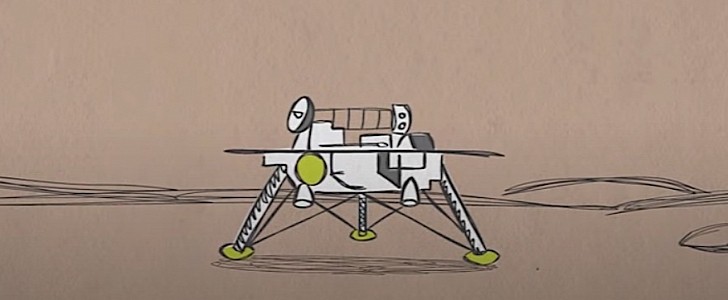When it landed on Mars back in February of last year, the Perseverance rover opened our eyes to what it really takes to safely put down a piece of hardware on an alien planet. And given how we’ll soon be preparing to send people up there too, the challenges that had to be overcome become even more daunting.
Over the past few years, through a YouTube series called Mars in a Minute, NASA’s Jet Propulsion Laboratory (JPL) has been trying to get us all to understand, in an easy-to-digest manner, what it needs to do to make Mars a suitable target for rovers, landers, and a potential human mission.
Given the renewed interest in space exploration, the still recent landing of the Perseverance, and upcoming missions to the Red Planet, we’ll revisit these videos in the coming weeks. We’ve already done that on Saturday, when we took a look at what happens with Earth-Mars comms when the Sun gets between the two planets, and we’ll continue today with something titled “How Do You Land on Mars?”
Turns out, pretty much in the same way you do on Earth, provided landing means returning from space into an atmosphere determine to light you up.
Just as we‘ve seen with Perseverance, the first thing a spacecraft needs to do when descending toward the surface is slow down. The shape of the spacecraft, with the largest portion of it pointing down towards the surface, helps it do that. That portion of the ship needs to be protected by a heat shield. As it slows about 90 percent, from thousands of miles per hour, the friction between the spacecraft and the atmosphere generates heat, and that’s exactly what the shield is there to protect against.
Once the spacecraft has slowed down to about 100 mph (161 kph) and has cleared the upper layers of the atmosphere, it needs to prepare for the actual touchdown. A parachute comes in handy at this point.
Since Mars has no water to allow a splashdown (and even if it did, that would not work as we have no one on site to recover the spacecraft), other options had to be devised for the actual landing of the rover.
First would be by means of retro rockets and airbags, in case we’re talking about a small or midsized rover. Secondly, in case we’re dealing with a larger lander, the same retro rockets would work, only this time in conjunction with landing legs. Thirdly, a very heavy rover needs a jet pack that could lower it on cables directly on its wheels.
All of the above (and the video below) sounds pretty simple and straightforward, but it really isn’t. If it were, we’d all be rocket scientists.
Given the renewed interest in space exploration, the still recent landing of the Perseverance, and upcoming missions to the Red Planet, we’ll revisit these videos in the coming weeks. We’ve already done that on Saturday, when we took a look at what happens with Earth-Mars comms when the Sun gets between the two planets, and we’ll continue today with something titled “How Do You Land on Mars?”
Turns out, pretty much in the same way you do on Earth, provided landing means returning from space into an atmosphere determine to light you up.
Just as we‘ve seen with Perseverance, the first thing a spacecraft needs to do when descending toward the surface is slow down. The shape of the spacecraft, with the largest portion of it pointing down towards the surface, helps it do that. That portion of the ship needs to be protected by a heat shield. As it slows about 90 percent, from thousands of miles per hour, the friction between the spacecraft and the atmosphere generates heat, and that’s exactly what the shield is there to protect against.
Once the spacecraft has slowed down to about 100 mph (161 kph) and has cleared the upper layers of the atmosphere, it needs to prepare for the actual touchdown. A parachute comes in handy at this point.
Since Mars has no water to allow a splashdown (and even if it did, that would not work as we have no one on site to recover the spacecraft), other options had to be devised for the actual landing of the rover.
First would be by means of retro rockets and airbags, in case we’re talking about a small or midsized rover. Secondly, in case we’re dealing with a larger lander, the same retro rockets would work, only this time in conjunction with landing legs. Thirdly, a very heavy rover needs a jet pack that could lower it on cables directly on its wheels.
All of the above (and the video below) sounds pretty simple and straightforward, but it really isn’t. If it were, we’d all be rocket scientists.







